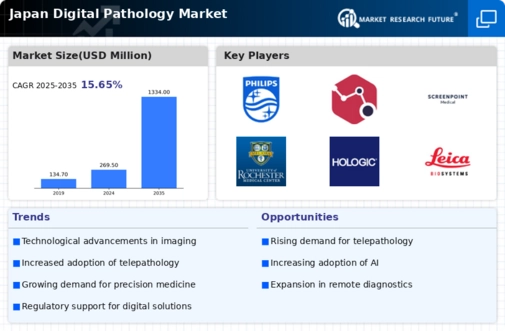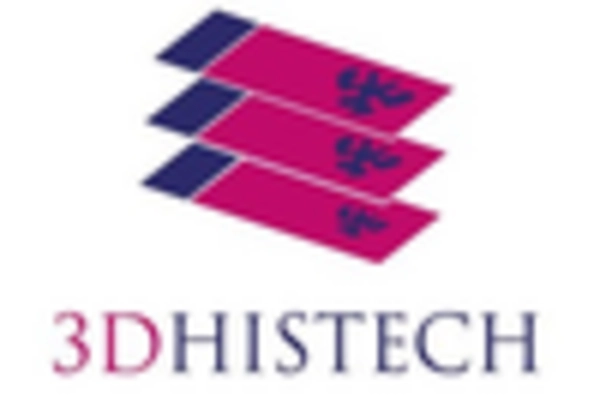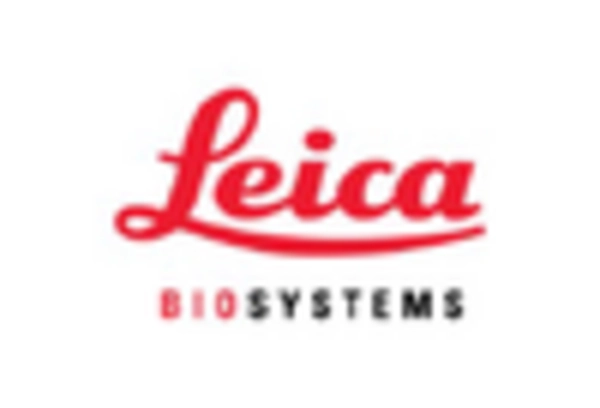Aging Population
Japan's demographic shift towards an aging population is a crucial factor influencing the digital pathology market. With over 28% of the population aged 65 and older, the demand for effective diagnostic tools is escalating. Older individuals are more susceptible to chronic diseases, necessitating advanced diagnostic methods to ensure timely and accurate treatment. The digital pathology market is poised to address these needs by providing solutions that facilitate remote consultations and efficient data management. As healthcare providers strive to cater to this demographic, the adoption of digital pathology technologies is likely to increase. This trend not only enhances diagnostic capabilities but also aligns with the broader goal of improving healthcare delivery for the elderly.
Rising Healthcare Expenditure
The increasing healthcare expenditure in Japan is a pivotal driver for the digital pathology market. As the government allocates more funds towards healthcare services, hospitals and laboratories are likely to invest in advanced technologies, including digital pathology solutions. In 2025, healthcare spending in Japan is projected to reach approximately $500 billion, reflecting a growth rate of around 3% annually. This financial commitment enables healthcare facilities to adopt digital pathology systems that enhance diagnostic accuracy and efficiency. Furthermore, the integration of digital pathology into routine practices may lead to improved patient outcomes, thereby justifying the investment. The digital pathology market stands to benefit significantly from this trend, as more institutions seek to modernize their diagnostic capabilities.
Growing Focus on Personalized Medicine
The shift towards personalized medicine in Japan is significantly impacting the digital pathology market. As healthcare providers increasingly recognize the importance of tailored treatment plans, the demand for precise diagnostic tools is rising. Digital pathology technologies facilitate the analysis of individual patient data, allowing for more accurate disease characterization and treatment selection. This trend is expected to drive market growth, as personalized medicine approaches become more prevalent in clinical practice. The digital pathology market is likely to expand as healthcare institutions invest in technologies that support this paradigm shift. By aligning diagnostic capabilities with personalized treatment strategies, the market can enhance patient outcomes and optimize resource utilization.
Integration of Artificial Intelligence
The integration of artificial intelligence (AI) into the digital pathology market is transforming diagnostic processes in Japan. AI technologies enhance image analysis, enabling pathologists to identify abnormalities with greater precision and speed. This technological advancement is particularly relevant in a country where the demand for accurate diagnostics is paramount. By 2025, it is estimated that AI-driven solutions could account for approximately 20% of the digital pathology market. The digital pathology market is thus experiencing a paradigm shift, as AI tools assist in reducing diagnostic errors and improving workflow efficiency. This integration not only streamlines operations but also supports pathologists in making informed decisions, ultimately benefiting patient care.
Enhanced Training and Education Programs
The development of enhanced training and education programs for pathologists is a vital driver for the digital pathology market. As the field of pathology evolves, continuous education becomes essential for professionals to stay abreast of technological advancements. In Japan, various institutions are increasingly offering specialized training in digital pathology, which is expected to improve the proficiency of pathologists in utilizing these technologies. This focus on education not only fosters a skilled workforce but also encourages the adoption of digital pathology solutions across healthcare settings. The digital pathology market stands to gain from this trend, as a well-trained workforce is likely to drive demand for innovative diagnostic tools and systems.

















Leave a Comment